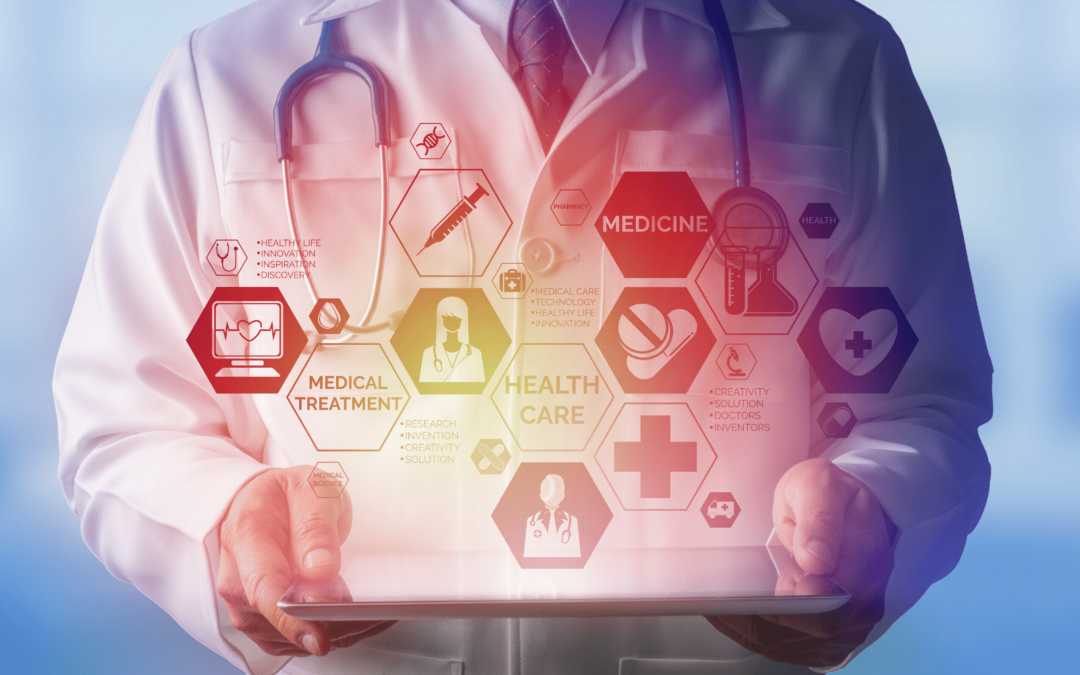It sounds simple to say that an Electronic Medical Records (EMR) system has many advantages over the old paper records system, but what are those advantages? From safety to efficiency, and productivity to reduced expenses, implementing an electronic medical records system offers numerous advantages. The cost of implementation and training to move from a paper records system to using an electronic health records system is definitely worth the investment.
Safety
The primary concern when dealing with medical records will always be safety. Safety in treatment of the patient; safety in ensuring records are properly maintained, accurate, and confidential; safety in sharing of records for additional treatment; and safety in ability to access records quickly when needed in an emergency. With EMRs, the patient’s current information is readily accessible at the point of care, no looking for medical files, waiting for couriers, or misplaced records. No more sifting through numerous pages and deciphering script to determine results or access history, all records are easily accessible, sorted, and test results graphed, which all help to reduce the chances of medical error. Files can be electronically shared with access restricted to those who need it for the patient’s care. With electronic transfer of records there is more accuracy with less potential for transcription errors.
Efficiency
In the past, storage of medical records and the staff to maintain those records was one of the largest costs of a medical practice. Retrieval of files was time consuming and inefficient. EMRs eliminate all this inefficiency. Electronic storage means that every file is immediately available with just the click of a button if you have the approved access. Doctors no longer need to sift through numerous pages of past tests and notes to compare results, everything is charted, and results are graphed to give the doctor a clearer picture for a more effective diagnosis. Electronic records promote more legible and complete documentation. Requirements can be set for specific boxes to be checked during patient documentation before continuation, which ensures a more complete record and that measures aren’t missed. Transferring records is now as simple as a click, no more couriers, lost or misplaced files, or incomplete records. Efficiency in a medical facility is one of the most important assets, and electronic medical records systems increase efficiency.
Increased Patient Engagement
Patients take a much more active role in their medical care today than they did in the past. With access to medical websites for patients to look up symptoms they come to their appointments much more informed, sometimes incorrectly if their sources were not credible. Electronic Medical Records can provide a tangible link between a doctor and their patient for accessing their medical records and test results, monitoring their medications, reading notes from their doctor, paying their bills, etc. Doctors can post links to credible sources for information regarding their diagnosis, videos for exercises, notes regarding medication dosages, etc. Often patients become overwhelmed while in a doctor’s office, and don’t absorb all the information given to them. With access to online EMRs, they can carefully review their doctor’s notes after they have gone home and know that they are properly following all their doctor’s recommendations. Patients can communicate with their doctors through secure online access, and vice versa. Once doctor’s have received test results, they can send a quick note to their patients through portals that provide secure access, reducing unnecessary follow-up appointments or phone calls.
Productivity
Another great benefit of EMRs is increased productivity. From the time a patient schedules an appointment to the point of care there are numerous steps eliminated when moving from a paper file to an electronic file. There is no need for staff to search for a paper file, immediate access is available electronically when the patient arrives for the appointment. Through an online portal, patients can update their current medications, symptoms, etc. prior to the appointment, or staff can print it for patient review upon arrival and immediately update the records. Doctors can quickly review an organized electronic file for all history without paging through numerous documents. Labels can be quickly printed for blood draws. The decrease in paperwork is tremendous, and the numerous opportunities that existed in the past for transcript errors during all these steps is eliminated. Medical practices can increase the number of patients served per day due to improved patient workflow and increased productivity.
Reducing Costs
All medical practices want to obtain their business goals while reducing costs. Nothing accomplishes this faster than implementing electronic medical records. Costs are saved in storage, staffing, decreased paperwork, reduced duplication of testing, and streamlined coding and billing. Using an EMR system means that as a diagnosis and pertinent information are entered into the system, the coding and billing becomes automated. Practices can increase their number of patients due to enhanced workflow and increased productivity. There is an improved bottom line due to more accurately and efficiently processing patient billing.
Genesis Medical Management can help your organization to provide higher quality and safer health care for your patients with an electronic medical records system. Call us today!

